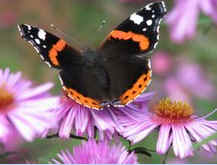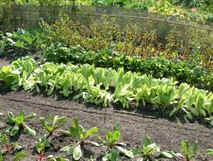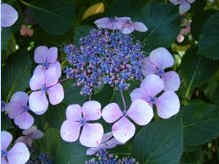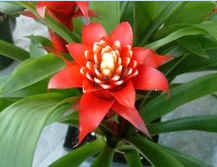Week 1: December gardening
December is the month when the garden
becomes the living backdrop for all your holiday
entertaining.
Flowers to sow in December - Catmint
Catmint is a subtle plant, with clumps of dainty
lavender flowers contrasting with the soft grey,
fine foliage. It's often used as a ground cover
beneath roses, where its gentle tones set off
the stronger colours of the rose blooms.
Catmint also makes an attractive border or an
effective softener for banks and walls. Once
they're established, the stems of catmint plants
layer naturally, forming roots wherever they
touch the soil.

Vegies to sow in December - Sweet corn
Corn that's sown this month will absolutely
romp away in the warm soil. Don't forget,
though, that corn needs good growing
conditions, so prepare the soil well beforehand
by digging in organic compost and some Thrive
Granular Plant Food. And make sure the plants
don't dry out at any stage – good mulching can
help with that, and corn's one plant that doesn't
mind if the mulch is pushed right up against its
stem. Yates Early Chief is a very hardy variety
with golden yellow cobs.
Prune in December
Prune lightly this month, dear gardener,
because heavy pruning will expose the plant's
soft underbelly to the hot summer sun. Many a
plant's suffered sunburn after a drastic summer
haircut! It's best to restrict yourself to cutting off
dead flowers and shortening untidy shoots.
Don't forget to protect yourself, too, by wearing
sunscreen and a hat whenever you're outdoors.
Feed in December
December's a good month to feed citrus and
other fruits with Thrive Citrus Food or Bio Gold
pellets. Indoor plants are making more growth
now than they will at any other time of year, so
sprinkle a little Once-A-Year Feeder on to their
pots or use the traditional favourite, Thrive
Concentrate Houseplant Food.
December pest watch
Summer is caterpillar season. Don't worry
about a small number of caterpillars –
remember they might turn into beautiful
butterflies (pictured). But if a plague of grubs is
causing devastation, spray Yates low toxic
Success or sprinkle Nature's Way Derris Dust.
December job file
If you're planning to go away in the holiday
season, prepare the garden by mulching beds
and moving pots to keep each other company.
Sounds funny, I know, but they stay cooler
when they're crowded together, and they're far
less likely to dry out.
Week 2: The summer garden
Mornings and evenings are the best times of
day in the summer garden. So what should you
be doing when you're out of doors at this time
of year? Here are some tips from Yates:

Summer feeding
Regular fertilising is a job that's often neglected
these days but it can make an amazing
difference to a plant's state of health and its
growth rate. Many find this a confusing topic,
but it can be quite simple. Use a slow release
like Yates Once A Year Feeder for pots, quick-
acting Thrive soluble or Nitrosol for vegies,
herbs and flowers, Bio Gold organic pellets or
Magamp for shrubs and trees, citrus food for
fruit trees and rose food (e.g. Thrive granular)
for roses.
Summer lawn care
Feed lawns, too, with slow release Lush Lawn
Master. It gently nourishes for up to three
months and the added soil wetter carries the
goodness right down to the roots. Prevent
insect damage to lawns by applying Soil Insect
Killer. Problems are most likely to arise late in
the season. Lawn weeds can be controlled with
hose-on Weed 'n' Feed, but don't use this too
often, and check to make sure it suits your
lawn.
Summer roses
Yates Rose Gun takes care of most of the
insect pests and diseases that love to attack
these plants. Use Super Shield for larger
gardens – same insecticide and fungicide
(disease treatment) but in an economical
concentrate. Pick lots of flowers.
Summer vegies
Harvest crops regularly to keep plants in full
production for as long as possible. Pick
courgettes, cucumbers, beans and tomatoes as
soon as they're ready. Leafy vegies like lettuce
(pictured) should be kept moving along with
fortnightly waterings of Thrive soluble –
otherwise they'll rush to seed in the heat.
Summer fruit
Peaches, plums, apricots and passionfruit are
at their peak in summer. Watch out for thrips
and aphids on stone fruit. Use low toxic Mavrik,
which won't harm bees. Apples and pears are
developing throughout the warm weather.
Band trunks to help trap and control codling
moth. Success will take care of leaf roller
caterpillars. Many of the leaf problems that
affect deciduous fruit trees can only be solved
with a winter spraying program, so take note
now for later treatment.
Water saving
Check to see that all the garden beds are
mulched (preferably with an organic layer), and
plants are protected with both soil wetter and
water storing crystals. What's the difference?
Soil wetters (e.g. Yates Waterwise) are applied
to the top of the soil in the root area to ensure
water gets right into the roots.
Water crystals absorb and hold moisture. As
part of this process they change from dry,
plastic-like chips to a soft, jelly-like consistency.
They must go in at the root level, either before
planting or into vertical holes into the root
region. Never leave them on top – they'll pull
water out of the soil, which is exactly what you
don't want!
Week 3 Gifts for a gardener

Stuck for Christmas ideas? If the recipient is a
gardener, it's easy to come up with a garden-
friendly gift. Here's a number of seasonal
suggestions from Yates:
? For more than one hundred years Yates
Garden Guide has been New Zealand's
favourite gardening book. The latest
edition, the 77th, is filled with updated
information and illustrated with colourful,
inspirational pictures. It's the perfect gift
for everyone who has a garden. There's
a companion volume, too – Yates Roses
– with descriptions, pictures and
information on more than 300 rose
varieties.
? Yates plastic pots come in square or
round shapes so there's one to suit
every garden. One of the great
advantages of plastic pots is that they're
so easy to move around. Why not team
a pot with a favourite, summer flowering
plant such as a hydrangea (pictured)!
? A rose lover's pack is another good idea
for a Christmas gift. Start with a potted
rose, a larger pot and a bag of top
quality potting mix (something like Yates
Thrive Premium). Then add the extras: a
Yates Rose Gun, Nutricote controlled
release fertiliser and some Dynamic
Lifter Seaweed Tonic to boost the
plant's health. A pair of thorn-proof
gloves and some good quality secateurs
would make welcome additions.
? The Zero Weeding Brush is a clever
gardening aid that eliminates the need
to get down on your knees at weeding
time. Its hollow handle is first filled with
a solution of Roundup or Zero
Glyphosate. Then pushing the bristles
of the brush firmly onto a hard surface
releases the flow of herbicide onto the
bristles. After that it's just a matter of
walking around the garden, painting
weeds as you go. Zero Weeding Brush
makes a great gift for the, shall we say,
more mature gardener.
? At the other end of the age spectrum,
why not put together a seed starter pack
for some budding young gardeners?
You'll need Yates Black Magic Seed
Raising Mix, a pot and some packets of
seeds. These should be kid-friendly
varieties like sunflowers, nasturtiums or
baby beetroot. Add a packet of Thrive
Soluble Plant Food to feed the young
plants once they've germinated. Put the
whole lot in the pot and tie it up with a
big Christmas ribbon.
? A true gardener will always appreciate a
big bag of something a bit smelly for
Christmas! Blood and bone, Dynamic
Lifter Potting Mix, organic compost or
cow manure are good suggestions. Just
don't leave them sitting under the
Christmas tree – the smell might frighten
Santa away!
Week 4 – Bromeliads
Many people would be surprised to find that
they've been eating a bromeliad all their lives.
That's right, the pineapple is probably the most
widely grown bromeliad.
But what most us think of as bromeliads are the
ornamental varieties that have become
increasingly popular. They originate in tropical
America and can be grown outdoors in frost-
free climates, or indoors in cooler areas.
They're ideal plants for small gardens with
limited soil and make useful ground covers for
areas in the light shade or trees.
Most bromeliads are epiphytes, which means
they don't grow naturally in the soil, but instead
attach themselves to crevices in rocks or trees.
For this reason most bromeliads need excellent
drainage so, if growing them in a pot, use an
orchid mix or add extra bark to well-drained
potting mix. Because the plants can be very
top heavy, put some rocks or stones in the pot's
base before planting. To grow bromeliads in
the garden, build a raised-up bed, add some
well-drained material (such as the potting
mix/bark blend already mentioned) and, when
the broms are in place, place a few flat stones
around them. Bromeliads can also be tied onto
ponga trunks.

Watering bromeliads
Many bromeliads have a vase-shaped central
cup that can be filled up at watering time. In
cooler climates, however, it's best not to have
water sitting in the centre for long periods as
this can damage the plant. Humidity is
desirable, so make sure you mist the plants
regularly during hot, dry periods.
Fertilising
Bromeliads need only minimal fertilising. Feed
occasionally during the growing season by
watering with half strength Thrive soluble or
Nitrosol, or apply a small, once-a-year sprinkle
of Thrive Shake 'n' Feed around plants in pots
or garden beds.
Pests
Pests are rarely a problem - over-watering and
poor drainage are the greatest threats to the
wellbeing of these plants. Scale infestations
are difficult to treat because bromeliads are
particularly sensitive to the oil sprays that are
normally recommended for scale control.
Confidor can help, but often the best course is
to discard the worst-affected sections of the
plant.
Propagation
Propagation of bromeliads is easy. After
flowering, the central part of the plant will
gradually die, but new sections will sprout from
the base. When these 'pups' are big enough to
handle, they can be cut away from the mother
plant and settled into new pots or spots.
Bromeliad varieties
There are lots to choose from but favourites are
the Neoregelias with their central, coloured
cups, Tillandsia, the curious tree-dangling
Spanish moss, Guzmania (pictured) for its large
flowers, and the cold-tolerant Puya. For more
inspiration, look for the beautiful new
Bromeliads: The Connoisseur's Guide by New
Zealander Andrew Steens.
Thanks Yates & Merry Christmas
Everyone



